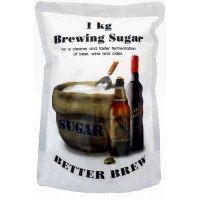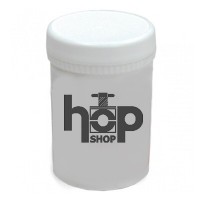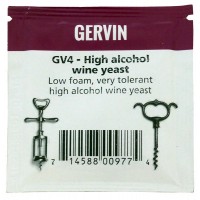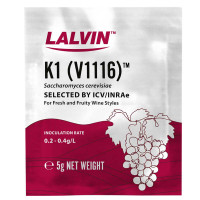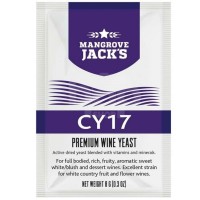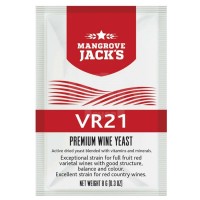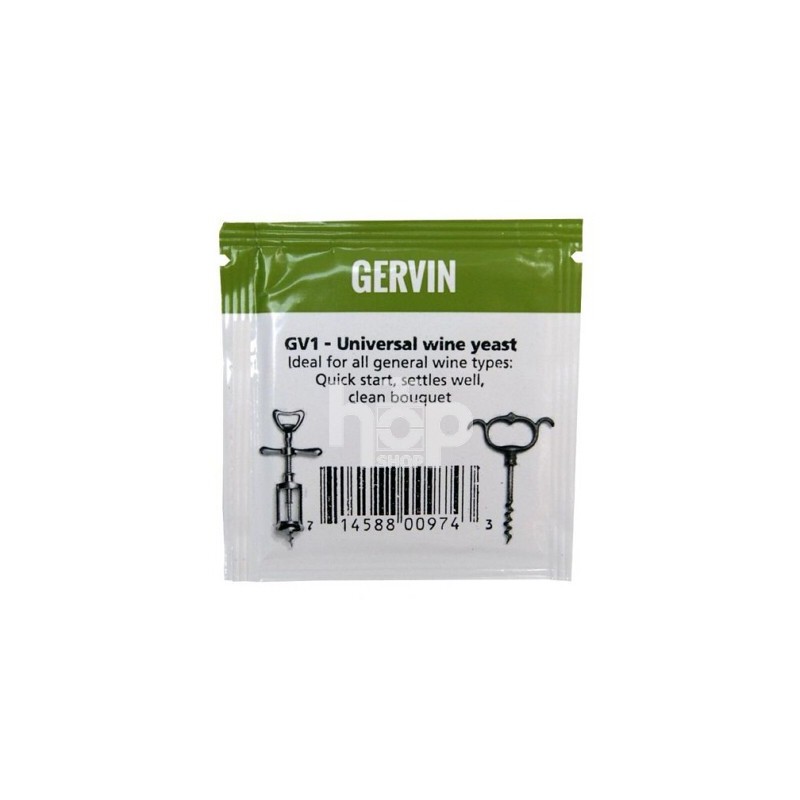
Gervin GV1 - Universal Wine Yeast (Bananas, Flowers, Rosehips)
Gervin GV1 Universal Wine Yeast – 5g
Gervin GV1 is a reliable, general-purpose wine yeast used across France for making both white and red wines.
It’s ideal for home winemakers looking for something that just works — clean fermentation, low fuss, and versatile enough for most country wine recipes.
Each sachet is perfect for a 4.5L (1 UK gallon) demijohn or up to 23 litres of wine.
It handles sulfites well (up to 100ppm), works at cool temps (15–25°C), and settles out cleanly at the end.
Whether you're fermenting florals like dandelion or fruitier wines like banana, GV1 is a solid choice.
Gervin GV1 Yeast – Key Specs
- Strain: S. cerevisiae (Narbonne)
- ABV Tolerance: Up to 18%
- Fermentation Temp: 15–25°C
- SO2 Tolerance: Up to 100ppm
- Dosage: 5g per 23L (1 sachet = full batch)
- Flocculation: Good – clears well after fermentation
What Is Gervin GV1 Yeast Best For?
This yeast is great for light, dry country-style wines. It won’t overpower delicate ingredients, which makes it perfect for floral, root, and grain-based wines. Think wildflower wine, rosehip, carrot, and beyond.
- Dandelion Wine
- Rosehip Wine
- Barley Wine
- Banana Wine
- Carrot Wine
- Orange, Pear, Ginger, Rice, or Redcurrant Wines
Looking for recipes that work well with GV1? Try these:
How to Use Gervin GV1 Yeast
Simple Method: Just sprinkle it directly onto the surface of your must. No need to stir it in — it’ll activate and get going on its own.
Optional Yeast Starter: Want to give fermentation a stronger start? Here’s how:
- Add 1/2 tsp sugar and the sachet to a clean glass.
- Top with ~50ml of lukewarm water (20°C).
- Cover the glass and leave it for 15–20 mins.
- While it activates, stir your must to introduce oxygen.
- Pour in the starter, fit your airlock, and let it do its thing.
Substitute Yeasts
If GV1 isn’t available or you want a different take, try this:
- Mangrove Jack’s SN9 – Similar all-rounder with a neutral profile.
Brewer’s Tip
GV1 is great for cooler brewing spaces — like a UK shed or cupboard — as long as you stay above 15°C.
Don’t rack too early. Let it ferment fully and clear on its own — that’s where you’ll get the best flavour and clarity in the bottle.

